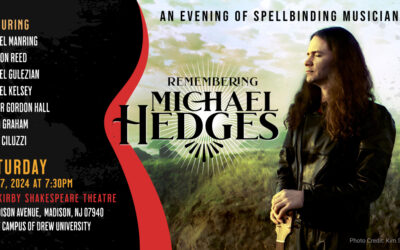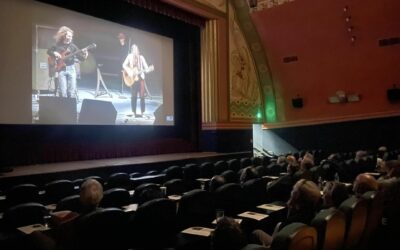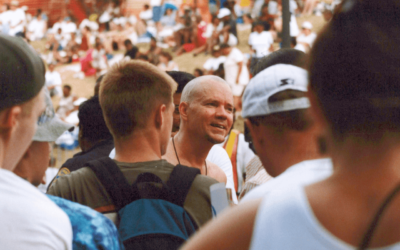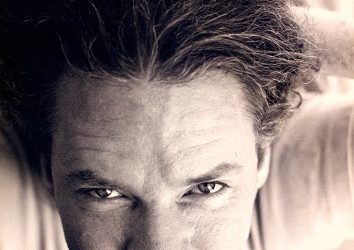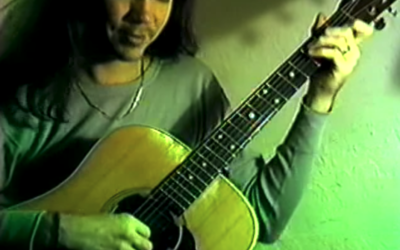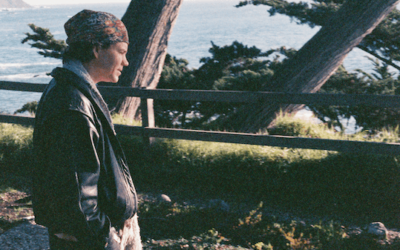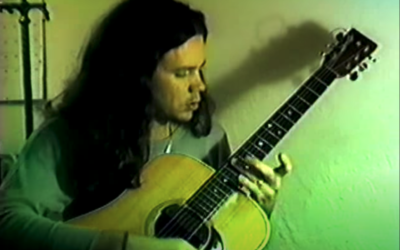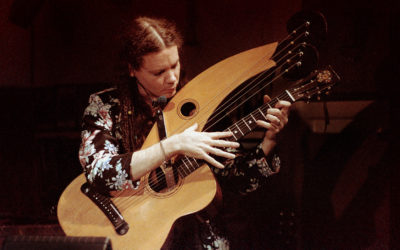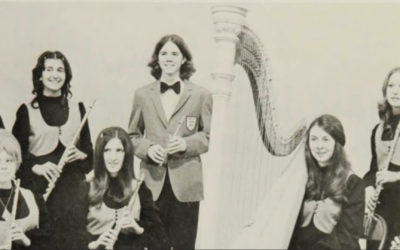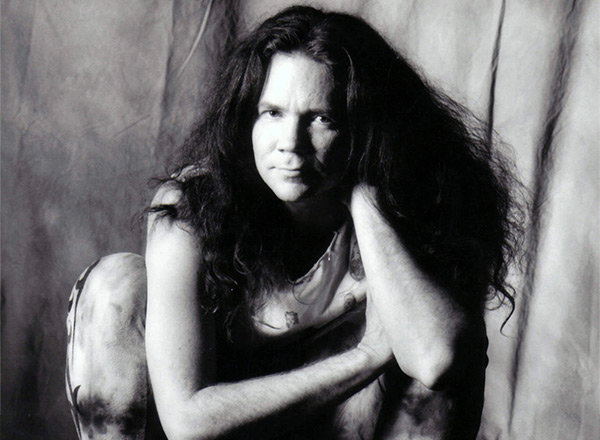Biography
written by Jake White, biographer
Michael Hedges (1953–1997) was an American composer, guitarist, singer-songwriter, and multi-instrumentalist. He is best-known for his innovative acoustic guitar/harp guitar compositions and high-energy live performances.
From 1973–1997 Hedges developed revolutionary techniques on the acoustic steel-string guitar that are widely used by guitarists today. Although he was a recording artist on the new age label Windham Hill, his music defies categorization.
Photo Credit: Cathye English
1953 —
Born in Sacramento on New Year’s Eve in 1953, Hedges soon moved with his family to Enid, Oklahoma where he grew up. He came to love music at an early age and took lessons in cello, clarinet, and piano. In sixth grade, Elvis and the Beatles inspired him to picked up the guitar. He played in rock bands throughout his adolescence, sometimes while wearing a white Pete Townshend-style jumpsuit. The guitar became his primary focus, but his interests expanded to other instruments along the way.
1971 —
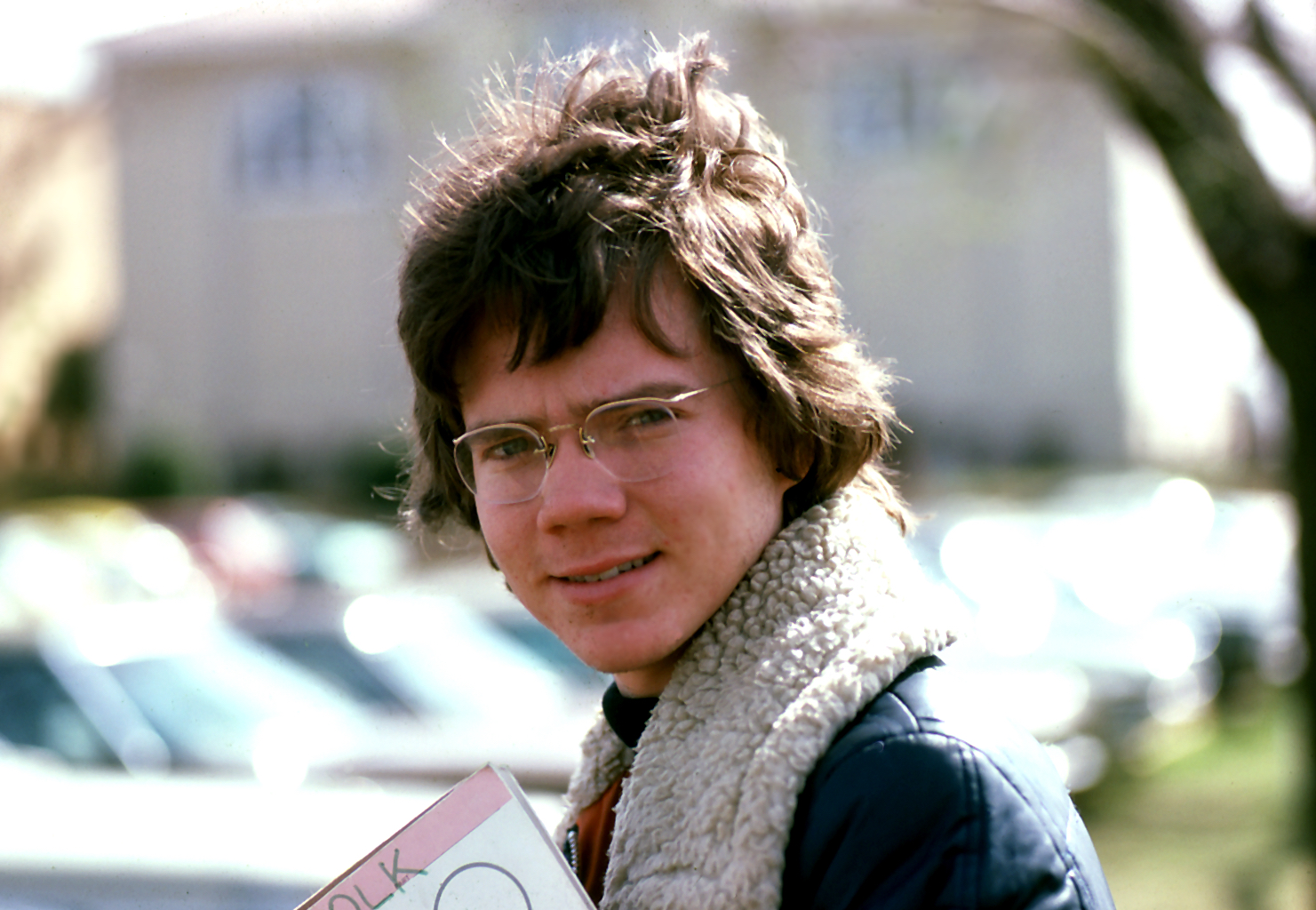
Michael learned to play the flute, inspired by the flute work of Ian Anderson of Jethro Tull, which he played in the high school marching band. During his junior year of high school, his family moved to Northern California for one year when his father took a teaching sabbatical at Humboldt State College. Michael fell in love with California and its folk rock music scene of the time, especially the music of Joni Mitchell, Crosby, Stills & Nash, and Neil Young—who all used alternate guitar tunings. Before long Michael was experimenting with his own unusual tunings on his 1971 Martin D-28 guitar (later named “Barbara”).
As Hedges experimented with altered tunings, he started exploring unconventional guitar techniques.
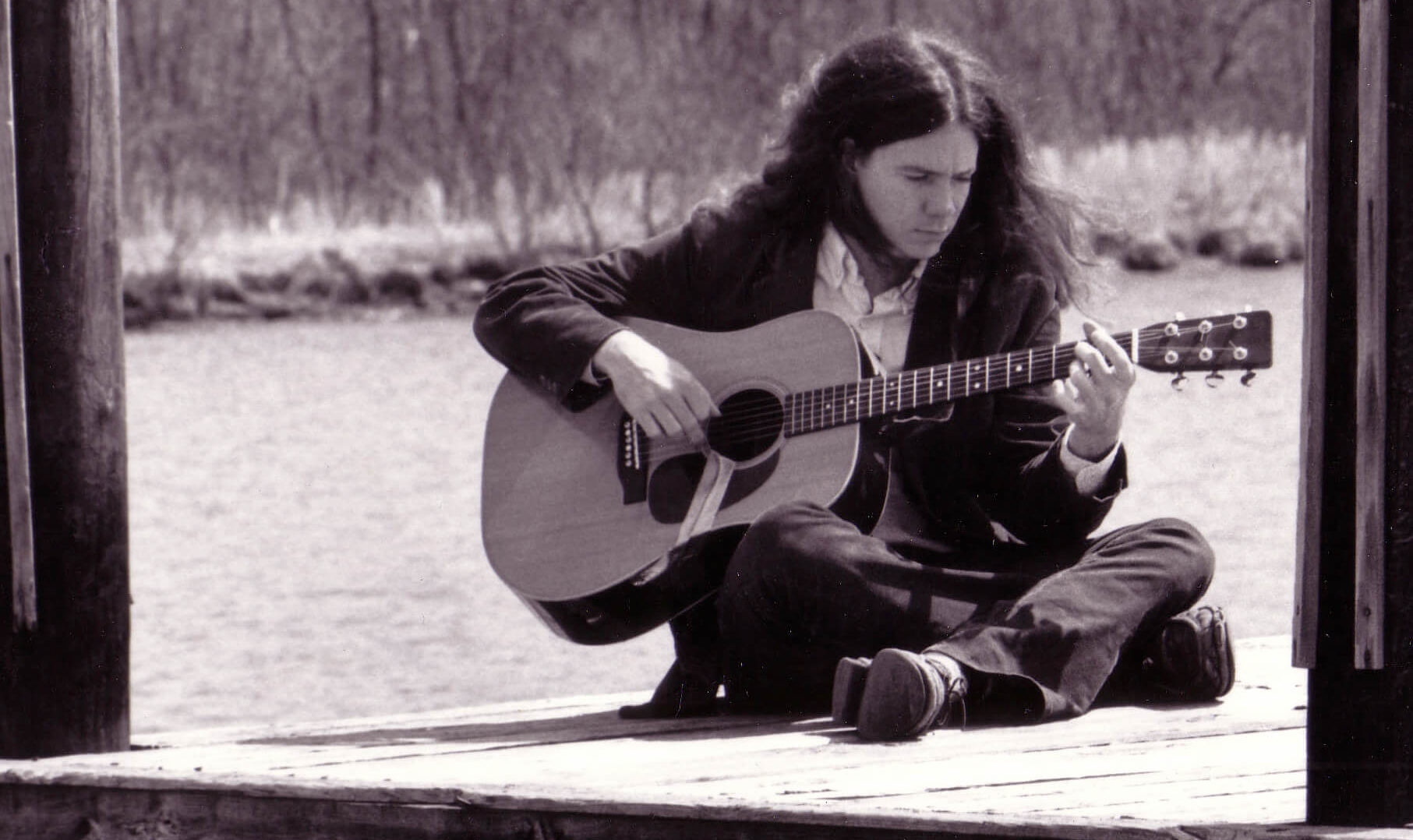
1972 —
In 1973 he wrote “Silent Anticipations,” one of his seminal guitar solos. This piece included innovative techniques such as left-hand tapping on multiple strings over the top of the guitar neck, extensive use of percussion on the body of the guitar, and unique rhythms and harmonic voicings. He remained focused on the guitar as his instrument of choice, but he studied flute and composition at Phillips University for three years, from 1972–1975. He went on to study classical guitar, composition, and electronic music for five more years at the prestigious Peabody Conservatory of Music in Baltimore, Maryland. He wrote most of the pieces from his first album, Breakfast in the Field (1981) during his college years (1973–1980).
1980 —

After graduating from Peabody Conservatory in May 1980, Michael moved to Palo Alto, California for the summer to attend a four-week seminar in computer-generated music at Stanford University.
While attending Stanford, Hedges started performing regularly at the New Varsity Theater, a popular restaurant, theater, and bar near the university.
Hedges returned to Baltimore in the fall of 1980 to attend a post-graduate electronic music seminar at Peabody, but would soon return to Palo Alto.
1981 —
In early 1981, Will Ackerman, founder of Windham Hill Records, came to watch a film at the New Varsity Theater. He was urged (even bribed with movie tickets) by the theater’s general manager, Randy Lutge, to listen to the guitarist performing upstairs.
Not easily impressed, Ackerman was reluctant, but he went upstairs, sat down and watched Michael perform. Ackerman later reflected on that night, “[Michael] tore my head off, watching the guitar be reinvented.” Hedges and Ackerman signed a makeshift record contract on a napkin that night.
“[Michael] tore my head off, watching the guitar be reinvented.” Hedges and Ackerman signed a makeshift record contract on a napkin that night.
— Will Ackerman
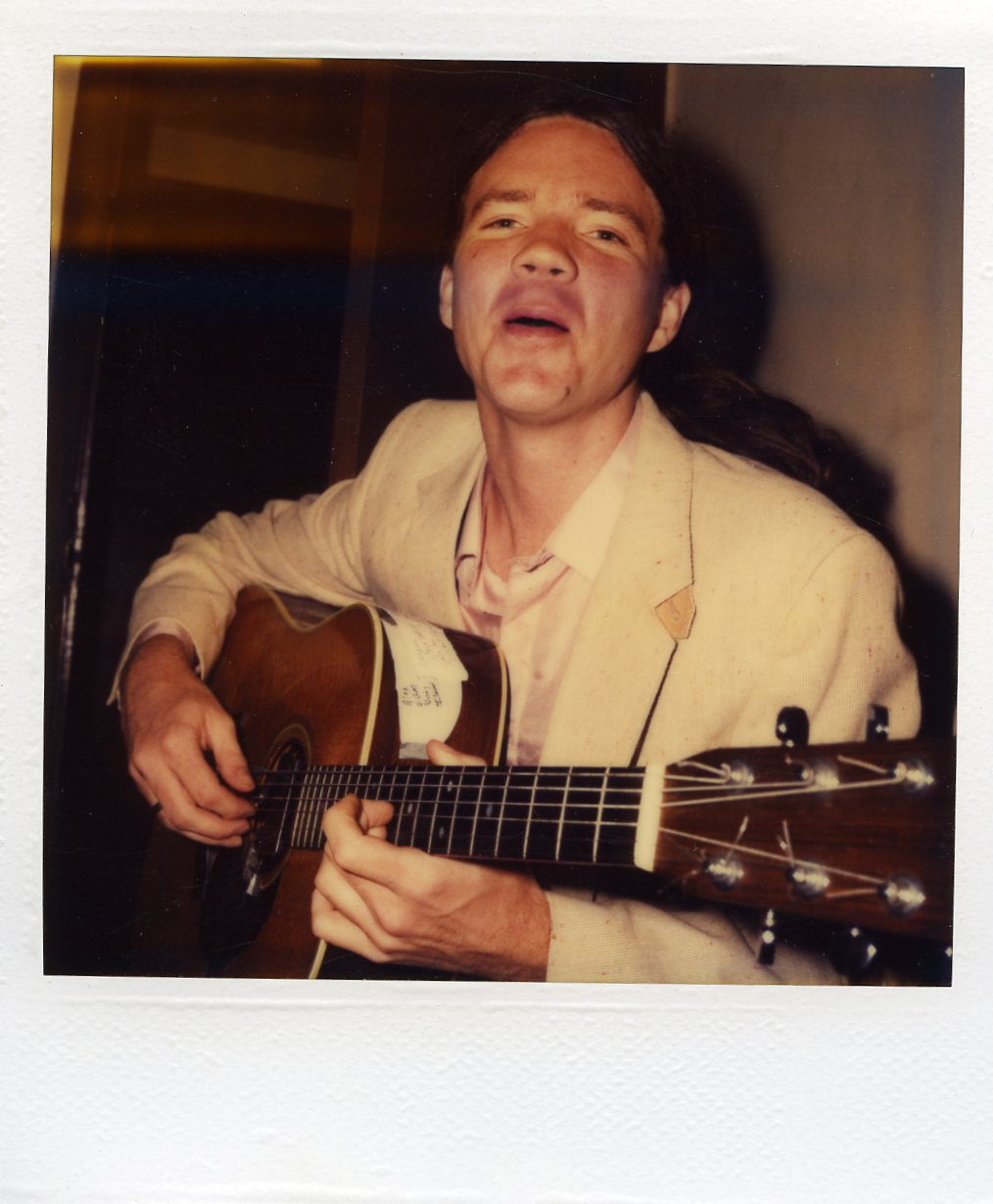
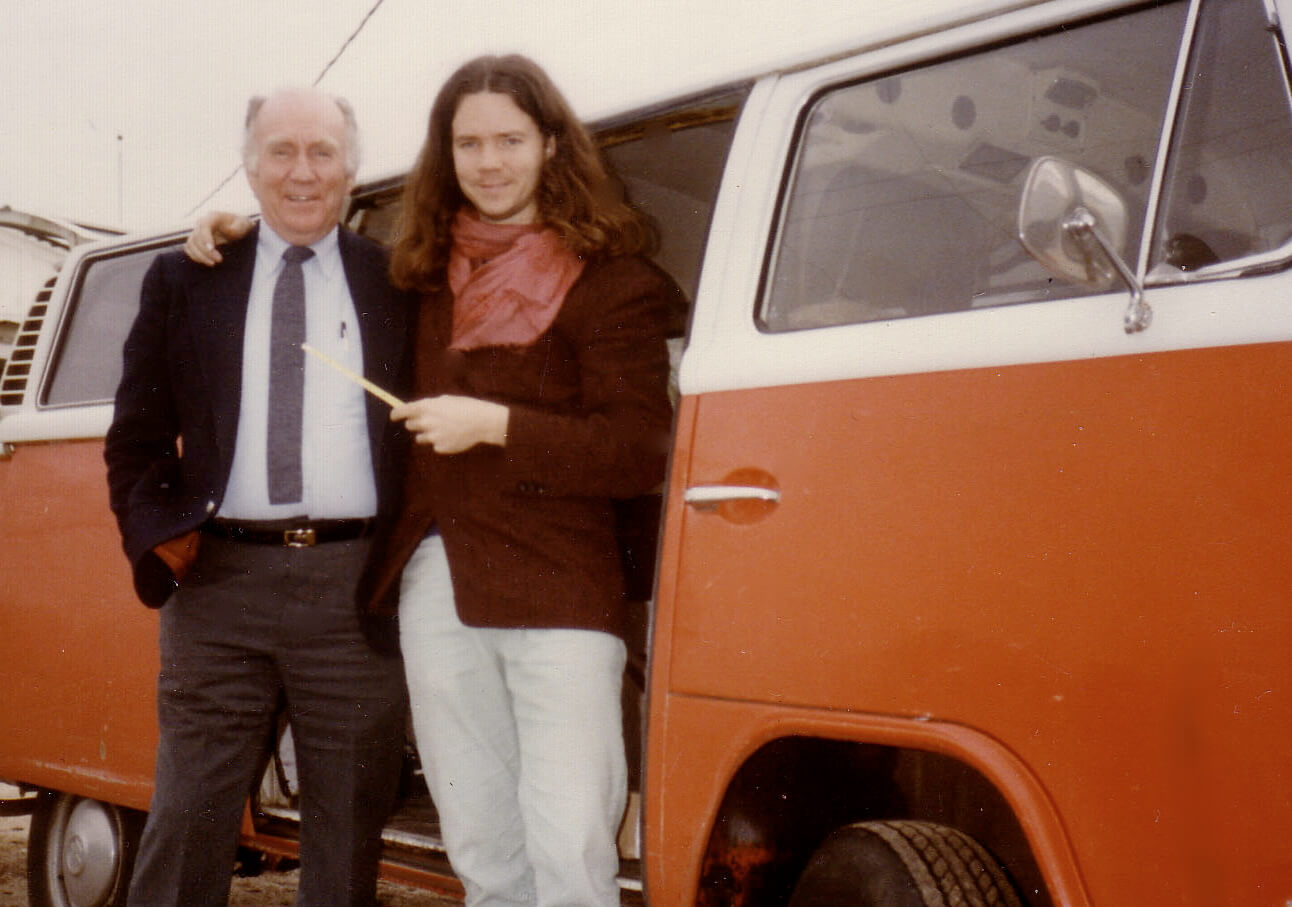
In October he released his first album, Breakfast in the Field. This album established Hedges as a dynamic and skilled composer-guitarist. He started touring with other Windham Hill artists, including bass guitarist, Michael Manring, who joined Hedges in both the studio and on tour throughout his career.
1984 —
But Hedges wasn’t content with reinventing the acoustic guitar.
Never one to sit still, he was soon pursuing other musical paths.
In 1985, Hedges worked with famed producer Elliott Mazer (producer of Neil Young’s Harvest) to produce an impressive vocal album that showcased his singer-songwriter skills (Watching My Life Go By). Around the same time, Hedges discovered a vintage harp guitar from the 1920s—with its six guitar strings and five open sub-bass strings—and he started composing innovative new music on this bygone instrument.
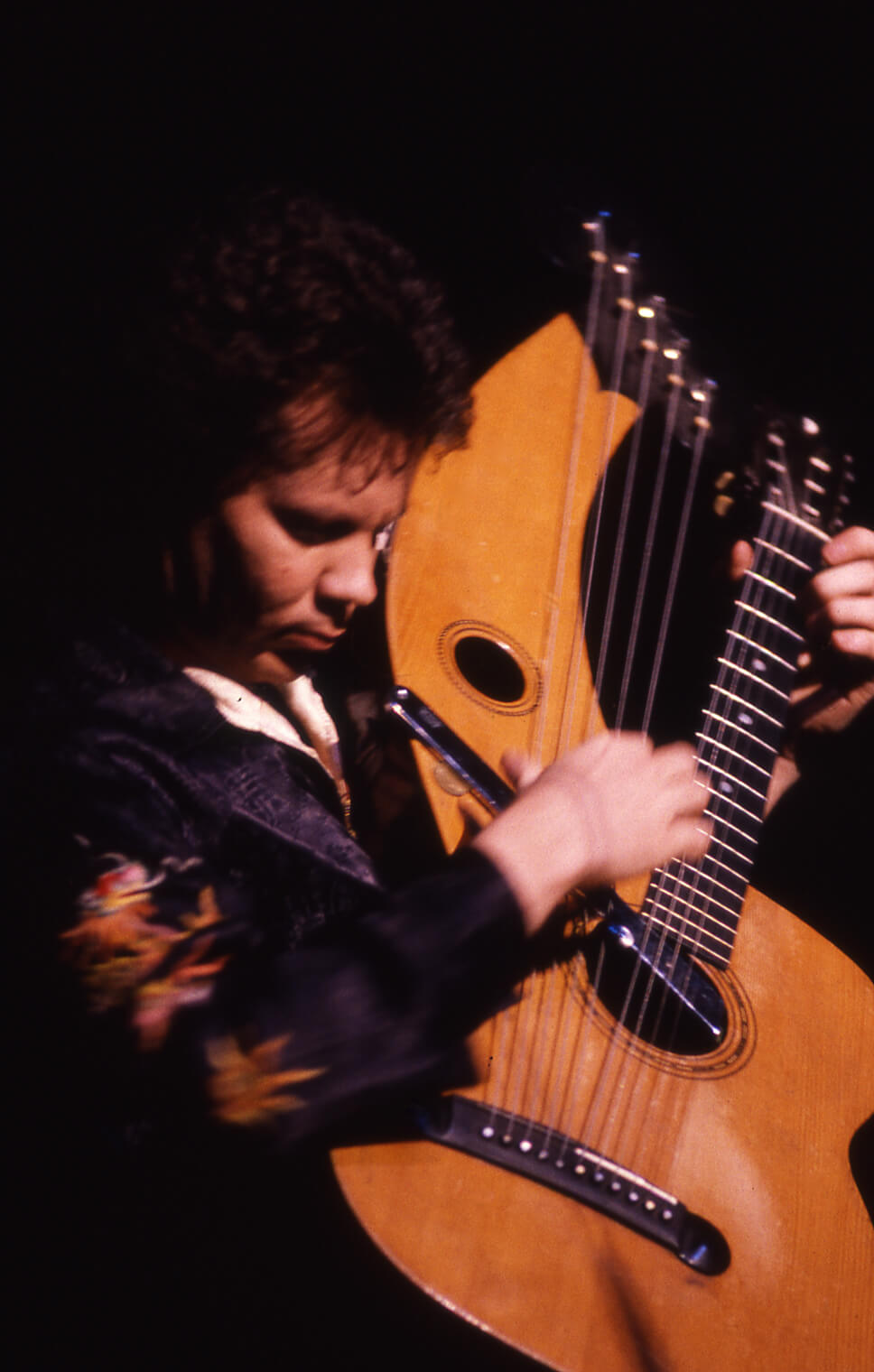
1987 —
Hedges continued to release a handful of critically acclaimed solo albums: a live album in 1987 (Live on the Double Planet) which features his dynamic stage performances; a Grammy®-nominated album of both ensemble and solo guitar pieces in 1990 (Taproot); a multi-instrumental vocal album that contained songs he wrote, engineered, produced and performed (The Road to Return [1994]); and in 1996 he released the Grammy® Award-winning instrumental album Oracle.
Along the way, Hedges also contributed music to several film soundtracks, and collaborated with early idols Crosby, Stills & Nash and Pat Martino; labelmates and musical comrades Will Ackerman and Michael Manring; and many others. Although he considered himself a composer first and foremost, Hedges became widely known as an innovator on the acoustic steel-string guitar. After winning the annual Readers Poll award as Best Acoustic Guitarist in various categories from 1988–1993, Hedges was inducted into the Guitar Player “Hall of Fame.”
Michael toured extensively throughout the United States, Japan, and Europe. His live performances were more like a rock concert than a show from a solo instrumentalist. Always performing on his (usually bare) feet, Hedges would dance across the stage, and fling his long hair around. In addition to his original work, he performed uniquely-arranged cover songs written by Bob Dylan, the Beatles, Prince, AC/DC, Madonna, and many others.
His live guitar sound was enormous, with a booming low-end and crystal-clear high frequencies, his audience could literally feel his music.
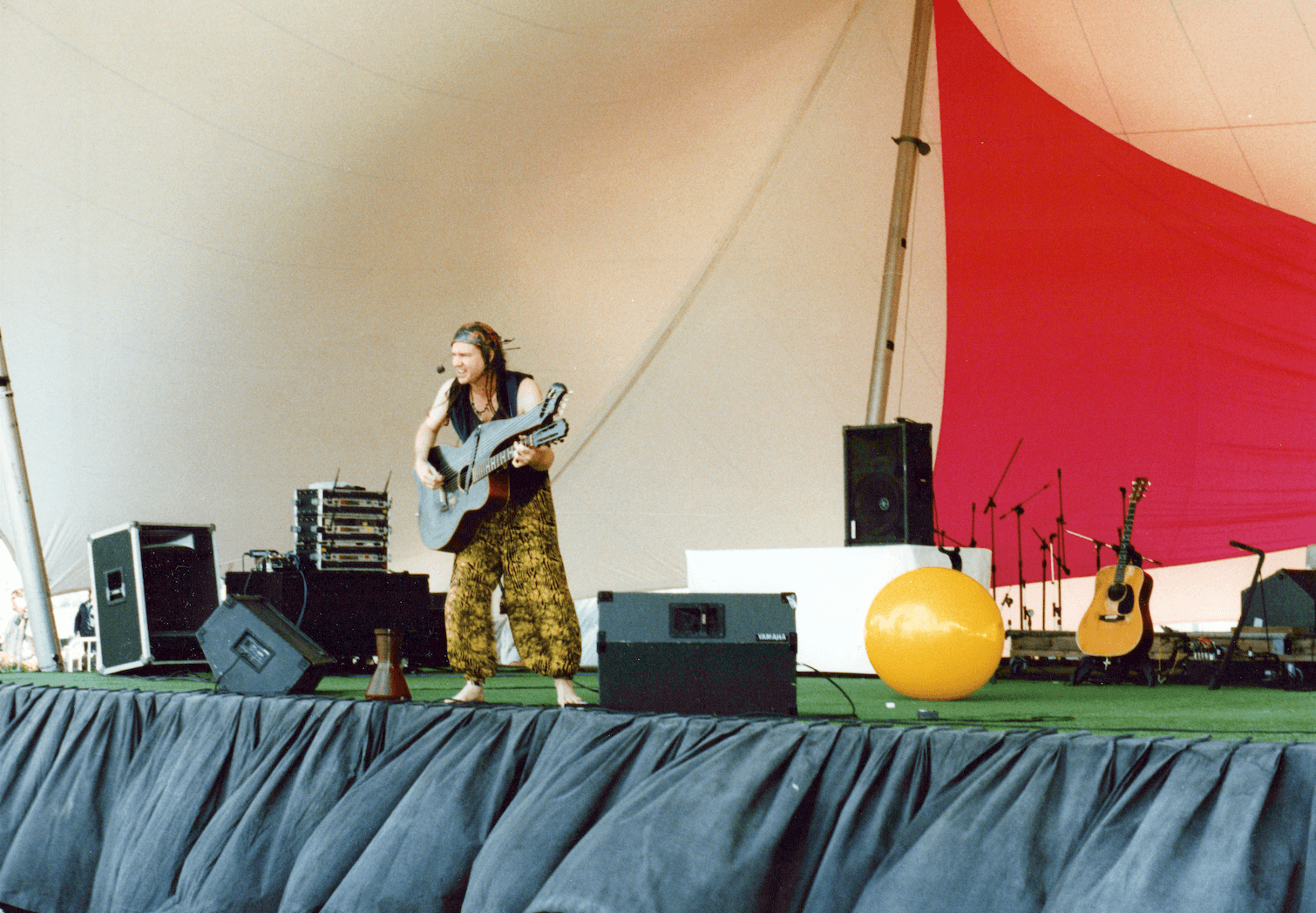
1997 —
And he always brought a high level of humor and entertainment to his shows. In some years, he played over a hundred shows; and, occasionally, he toured with national acts such as Crosby, Still & Nash, Leo Kottke, and Suzanne Vega.
In December 1997, Hedges was tragically killed in an automobile accident on his way home from the San Francisco airport after an East Coast tour. He was survived by his ex-wife Mindy Rosenfeld, his two children, his mother and three siblings. But his music lives on. His manager Hilleary Burgess worked tirelessly with collaborators to release Hedges’ final studio album, Torched, in 1999. And, in the years that followed, his music has been broadcasted extensively on radio shows, in various films, such as the 2007 Hollywood hit August Rush, and on television shows, such as Westwing.
2001 —
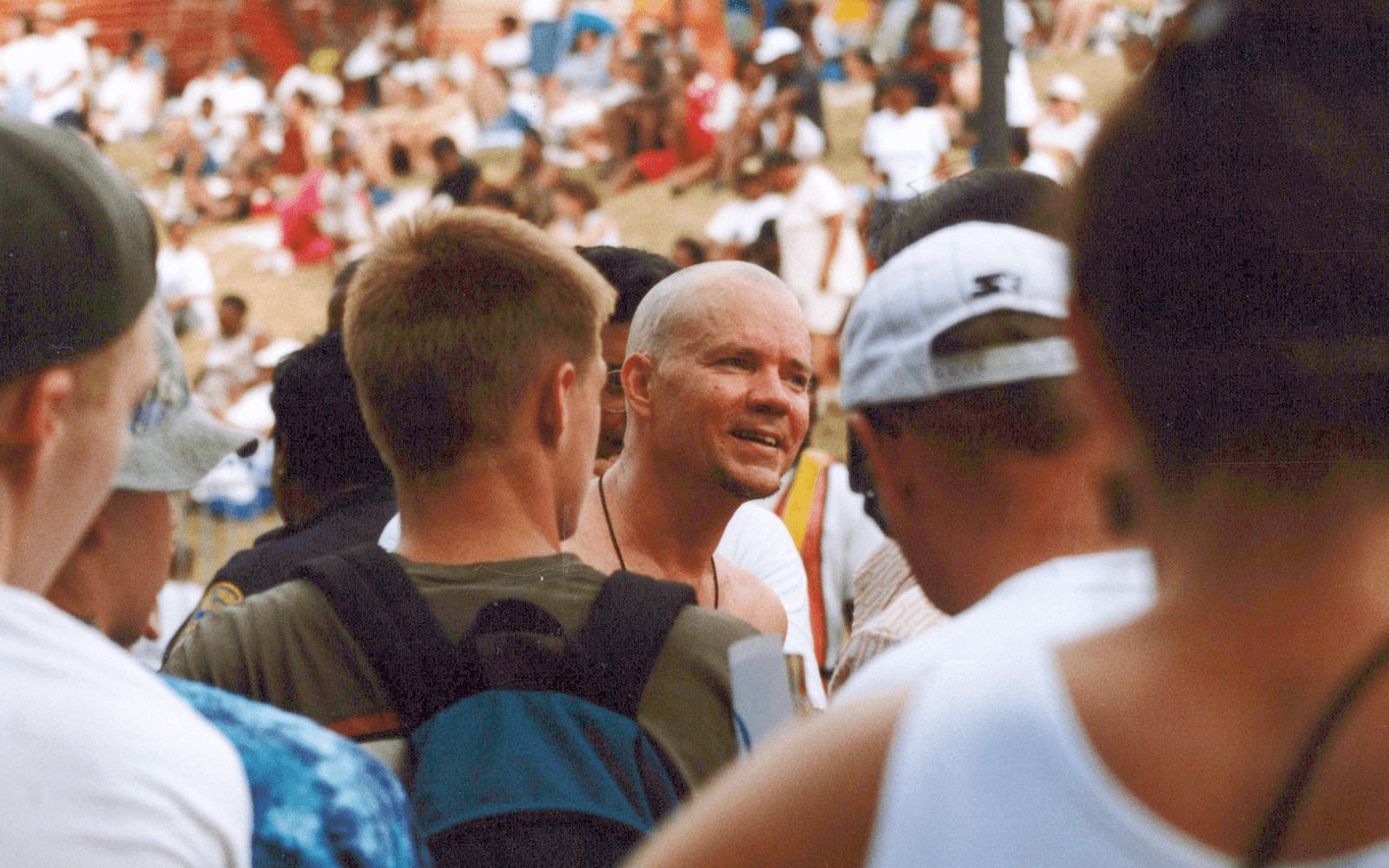
Hedges remains highly respected among the great musicians and performing artists of our time. One example: Hedges’ recorded guitar accompaniment was included on Late Night with Jay Leno when Crosby, Stills & Nash sang “My Country ’Tis of Thee” just after September 11, 2001. Twenty years later, Hedges’ music continues to inspire musicians, guitar builders, and songwriters throughout the world.
More stories about Michael’s Life & Music Career
August 17 – Remembering Michael Hedges concert
A tribute concert has been organized by friends, fans and former touring staff of Michael Hedges. All profits from this event will support production of the upcoming documentary Oracle: the Life & Music of Michael Hedges
...Release Party & Screening – The Artist’s Profile: Michael Hedges
On April 30, 2024, Michael’s family and filmmaker Brian Malone hosted a special pre-release party & screening of the 1998 documentary, “The Artist’s Profile: Michael Hedges.”
...25 Years Since We Lost Michael
It’s been 25 years since we lost Michael. Not a day goes by that we don’t think of him. Here’s an update on the projects we’re working on to celebrate his life and music.
...Waltzing Kokopelli to the Greek
“Our mystery here starts on August 10, 1996, the day I got a call from my pal Michael Hedges on my ruby red rotary-dial telephone.” – a remembrance of Michael Hedges written by his friend and collaborator, songwriter Patrick Bray...
The Slow Series: Layover
In 1983, Michael Hedges’s friend Randy Lutge filmed him playing several of his songs slowly, so that others might more easily learn them. Watch him play “Layover” in this format.
...Through the 1980s with Michael Hedges
When Michael built his studio in Mendocino I would take many trips up the coast to hang out with the Hedges family and record some original songs together.
...The Slow Series: Two Days Old
In 1983, Michael Hedges’s friend Randy Lutge filmed him playing several of his songs slowly, so that others might more easily learn them.
...Michael Hedges & the Harp Guitar
In 1984, Michael Hedges walked into a San Francisco guitar shop and discovered his next musical pursuit: an acoustic relic from the 1920s called a harp guitar.
...Michael Hedges’ Early Musical Influences – Part 1: 1953–1975
Which artists were Michael influenced by? Jake White, Hedges biographer explores Michael’s early musical influences.
...